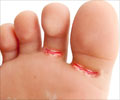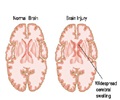After going through 2000 YouTube videos, scientists from University of Kentucky have identified an instant forearm response, which apparently takes place when players get knocked during
Thanks to YouTube videos (researchers went through 2000 of them!), scientists from University of Kentucky have identified an instant forearm response, which apparently takes place when players get knocked during sporting events. This will help coaches and trainers make future return-to-play decisions for those with head injury.
Lead researcher Jonathan Lifshitz, assistant professor in the UK Spinal Cord and Brain Injury Research Centre and colleagues are collecting data to document a visible, involuntary response to head trauma.The response, dubbed as "fencing response," has a forearm posture that resembles the en garde position in competitive sword fighting. It also can appear as a defensive boxing pose.
According to Lifshitz, the fencing response - which has also been observed in rats under experimental conditions - indicates damage to blood vessels and neurons in a critical brainstem region that controls balance.
During the study, the research team reviewed some 2,000 "knockout" videos on YouTube, eventually narrowing their sample to three dozen that showed moderate-to-severe impacts to the head, where the person receiving the blow did not immediately get up.
Of those, two-thirds exhibited a clear fencing response. The response was noted particularly in football and mixed martial arts.
"The fencing response frequently takes place before the player even hits the ground," said Lifshitz.
The findings are published in journal Medicine and Science in Sports and Exercise.
Source-ANI
TAN
 MEDINDIA
MEDINDIA



 Email
Email










